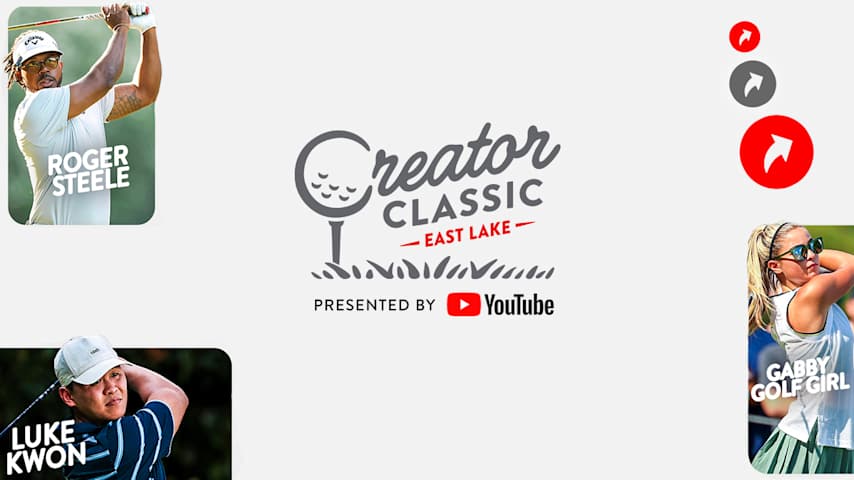Does the ‘hot hand’ phenomenon exist in golf?
7 Min Read

Does the ‘hot hand’ phenomenon exist in golf?
Escrito por Paul Hodowanic
Billy Horschel’s eyes lit up, his mind pulling him back to a three-week run of golf better than he’s ever played.
When asked about it, Horschel can recall many of the shots, but mostly he remembers how it felt. The hole looked as wide as Ben Hill Griffin Stadium, the football venue of Horschel’s alma mater, Florida. Hazards didn’t register. Swing thoughts weren’t clouding his brain. Horschel just committed to a target, and the ball followed. Over and over and over again.
The run in question came during the 2014 FedExCup Playoffs, and Horschel was on fire.
He finished runner-up at the Deutsche Bank Championship, the second leg of what was then a four-event postseason, in contention until a closing bogey dropped him two shots behind Chris Kirk. Horschel parlayed that burgeoning form, and, fueled by the disappointment in Boston, won the BMW Championship and TOUR Championship over the next two weeks to claim the FedExCup.
It’s arguably the most notable hot streak in the history of the FedExCup Playoffs, a player’s fortunes and career flipping over a trio of events. Horschel was 82nd in the FedExCup before the Deutsche Bank. Three weeks later, he was No. 1.
“You feel like you're invincible and you can't do any wrong,” Horschel said.

Billy Horschel’s 2014 FedExCup playoff run
Having the “hot hand” is a common phenomenon in sports. When a sharpshooter in basketball hits a 3-pointer, the basket suddenly seems massive, and the shots keep falling. In playoff hockey, when a goaltender finds a rhythm and single-handedly propels his team to victory. In baseball, when a pitcher paints every corner and leaves batters helpless. Or in football, when a quarterback finds that zen state and their every move is happening just a split second quicker than the defenders.
Athletes everywhere crave to reach that feeling, which is incredibly fleeting until you possess it, and it feels like it will never evade you.
All that is good and well, but does the hot hand actually exist beyond anecdotal examples and a competitor’s inner feelings? Is it tangible? Is it quantifiable? It’s been studied in other sports for four decades. The same answer always emerged: no.
But two professors at the University of Denver were compelled enough to wonder whether golf could be different.
“Everybody wants to believe in it,” said Dr. Andrew Urbaczewski, professor in the Department of Business Information and Analytics.
For starters, in other sports, the player on the heater isn’t the only athlete in the equation. A 3-point shooter’s shot could simply get blocked. A playoff goalie could be undone by an unforced error from his defender or a shot that takes the only angle they weren’t set up to save. A great pitch by a baseball pitcher could be hit by an even better swing.
In golf, those variables don’t exist. The golfer is the sole person responsible for the final outcome.
Urbaczewski and Ryan Elmore, a fellow professor at Denver, first had the idea to test the phenomenon in golf years ago after watching The American Express, one of what Urbaczewski tabbed as a “birdie barrage” tournament. The two professors watched keenly, their minds beginning to race as players stacked birdie after birdie. What if golf is different than the other sports? Maybe there actually was something inherent in golf that allows the hot hand theory to be more than a pundit-prescribed cliché.
Coincidentally, that curiosity spurred shortly after Horschel’s miraculous FedExCup Playoffs performance, and it was the year on the PGA TOUR that the two professors based their analysis.
Other studies had evaluated the hot hand from a bigger picture, but Urbaczewski and Elmore wanted to make it as granular as possible, leading them to this question: Do golfers on the PGA TOUR have a greater probability of recording a birdie or better on a hole immediately following a birdie or better? They also tested the inverse, or "cold hand" theory: Do golfers on the PGA TOUR have a greater probability of making bogey or worse immediately following a bogey or worse? This was the basis for determining whether the hot or cold hand theory existed.
With access to the TOUR’s Shotlink data, the professors evaluated shot-by-shot data from the 2013-14 season to find an answer – 113,723 holes played by 213 players throughout 19 tournaments encompassed the data set.
But before we get too far down the statistical rabbit hole, what do TOUR pros think? They are the ones who would be experiencing this phenomenon, after all. Unsurprisingly, the answers were mixed.
“I think there is something to that,” said Scottie Scheffler. “Golf is such a mental game. I think, you know, one hole you make a mistake. On the next hole, you know, a player may be thinking about that last shot still and … (a) guy birdies a hole all of a sudden, you know, the hole just looks really big to him.”
Scheffler would know better than most. He’s arguably spent the last three years playing with a hot hand. Scheffler has had two stretches over the last 18 months in which he’s won three times in a four-event stretch.

PGA TOUR players on Scottie Scheffler’s dominating season
Or take it to the granular level that Urbaczewski and Elmore studied, using Scheffler’s recent win at The Open Championship. Scheffler followed a birdie or better with another birdie or better six times over his four rounds. Put another way, Scheffler followed with a birdie or better with another birdie or better in 29 percent of his opportunities at Royal Portrush.
“Most of it has to do with just momentum,” Scheffler said.
Momentum is a bit of a lightning rod term in the academic community, and it mirrors closely the idea of hot hand theory, asking nearly the same question. To those who have studied momentum in sports, they often explain it the same way Viktor Hovland explained it, when asked about the hot hand theory.
“It's just randomness,” Hovland said, then caveated that it could be different based on the person. “Some people, when they make a birdie, they just go bananas like they just like, 'Okay, let's keep going.' And they might birdie a few more holes in a row, and when they make a bogey, it might go the other way around, and they might just ruin the round.”

Viktor Hovland’s FedExCup heroics
So, did Urbaczewski and Elmore’s findings mirror Scheffler's or Hovland’s thinking?
Elmore put it bluntly: ”We didn’t find any evidence to support that notion” that the hot hand theory exists.
“I would love to find something that says it’s (real), but the data for four decades hasn’t shown it,” Urbaczewski added.
After inputting the results from more than 100,000 holes of tournament golf, the professors’ model didn’t yield sufficient evidence to support the existence of a hot hand.
The research did reveal a notable new finding: The cold hand theory does exist. That TOUR players, on average, are significantly more likely to record a bogey or worse immediately following a hole in which they recorded a bogey or worse than after they make a par or better.
“The birdie barrage is a mirage, but the bogey train is real,” Urbaczewski said. “There's generally only one way to make birdie: fairway, green, one-putt. But there are a lot of ways to make bogey and a lot of ways to make double bogey. And if you start pressing a little more, and some of the research that we've done on loss aversion really makes the golfer believe they have to get that birdie back, because that was something that they owned and it got taken from them when they made a bogey.”
“They realize that loss in a deeper, more profound way than they realize that birdie,” Elmore added.
So why does the hot hand phenomenon persist in golf, and across all sports, if the empirical evidence continues to show it doesn’t exist? There’s an “inherent need of humans to assign order and reasoning to patterns which are merely random,” Urbaczewski and Elmore wrote in their findings.
But if a player believes they have the hot hand and that can help them perform better, Urbaczewski and Elmore won’t tell them they are wrong.
“If people believe that because I made a birdie, it’s going to make me better on the next hole, let them believe that,” Urbaczewski said, “and the psychology that goes to that puts them in a better frame of mind, (then) that’s awesome.”
Horschel, for one, will continue to believe in it. He saw it, felt it, and rode it to the crowning achievement of his career. It was more than a decade ago now, but Horschel remembers every moment.
“It doesn't matter what the data says, and they don't believe in it; there is something there,” Horschel said.






